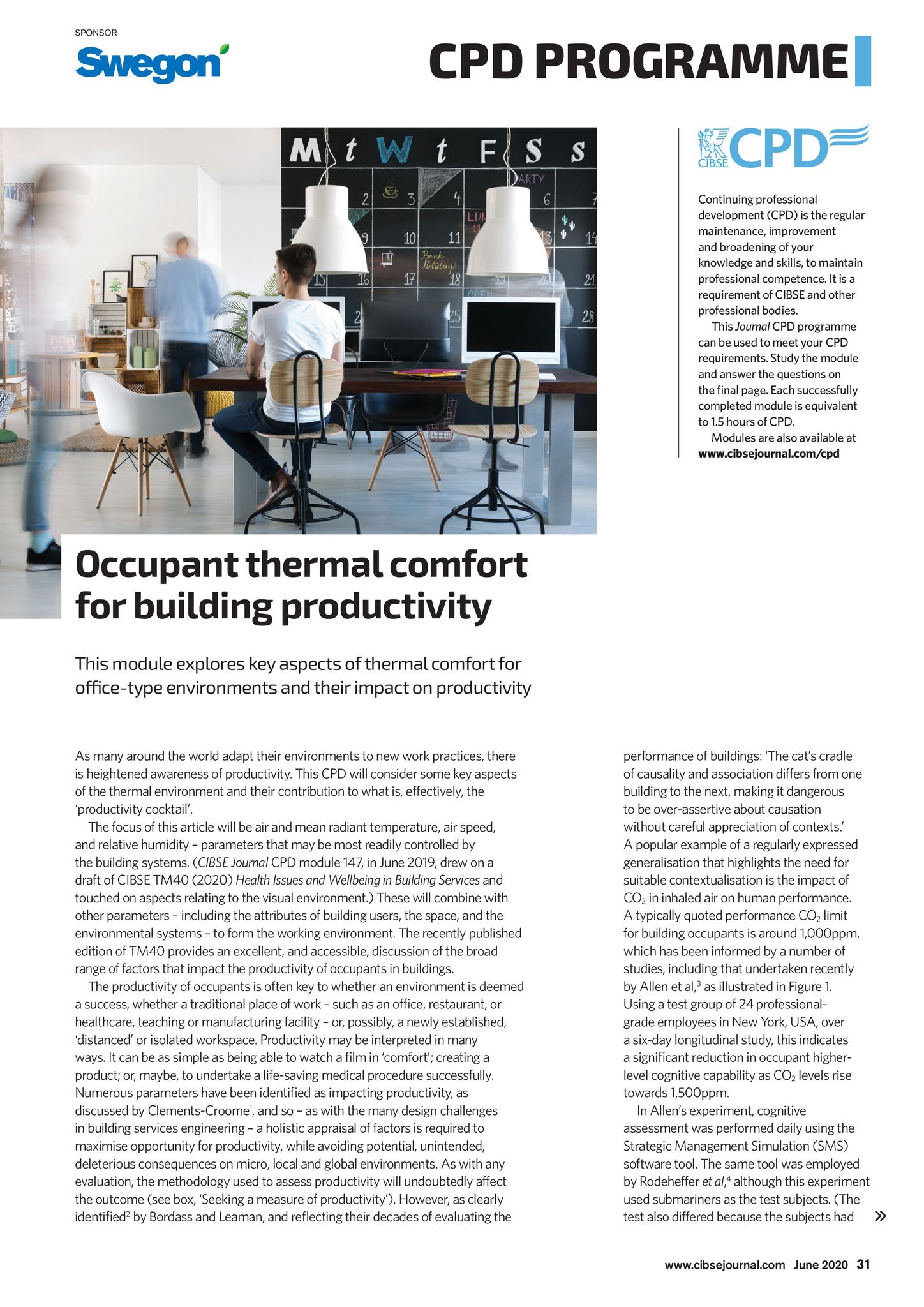


SPONSOR CPD PROGRAMME Continuing professional development (CPD) is the regular maintenance, improvement and broadening of your knowledge and skills, to maintain professional competence. It is a requirement of CIBSE and other professional bodies. This Journal CPD programme can be used to meet your CPD requirements. Study the module and answer the questions on the final page. Each successfully completed module is equivalent to 1.5 hours of CPD. Modules are also available at www.cibsejournal.com/cpd Occupant thermal comfort for building productivity This module explores key aspects of thermal comfort for office-type environments and their impact on productivity As many around the world adapt their environments to new work practices, there is heightened awareness of productivity. This CPD will consider some key aspects of the thermal environment and their contribution to what is, effectively, the productivity cocktail. The focus of this article will be air and mean radiant temperature, air speed, and relative humidity parameters that may be most readily controlled by the building systems. (CIBSE Journal CPD module 147, in June 2019, drew on a draft of CIBSE TM40 (2020) Health Issues and Wellbeing in Building Services and touched on aspects relating to the visual environment.) These will combine with other parameters including the attributes of building users, the space, and the environmental systems to form the working environment. The recently published edition of TM40 provides an excellent, and accessible, discussion of the broad range of factors that impact the productivity of occupants in buildings. The productivity of occupants is often key to whether an environment is deemed a success, whether a traditional place of work such as an office, restaurant, or healthcare, teaching or manufacturing facility or, possibly, a newly established, distanced or isolated workspace. Productivity may be interpreted in many ways. It can be as simple as being able to watch a film in comfort; creating a product; or, maybe, to undertake a life-saving medical procedure successfully. Numerous parameters have been identified as impacting productivity, as discussed by Clements-Croome1, and so as with the many design challenges in building services engineering a holistic appraisal of factors is required to maximise opportunity for productivity, while avoiding potential, unintended, deleterious consequences on micro, local and global environments. As with any evaluation, the methodology used to assess productivity will undoubtedly affect the outcome (see box, Seeking a measure of productivity). However, as clearly identified2 by Bordass and Leaman, and reflecting their decades of evaluating the performance of buildings: The cats cradle of causality and association differs from one building to the next, making it dangerous to be over-assertive about causation without careful appreciation of contexts. A popular example of a regularly expressed generalisation that highlights the need for suitable contextualisation is the impact of CO2 in inhaled air on human performance. A typically quoted performance CO2 limit for building occupants is around 1,000ppm, which has been informed by a number of studies, including that undertaken recently by Allen et al,3 as illustrated in Figure 1. Using a test group of 24 professionalgrade employees in New York, USA, over a six-day longitudinal study, this indicates a significant reduction in occupant higherlevel cognitive capability as CO2 levels rise towards 1,500ppm. In Allens experiment, cognitive assessment was performed daily using the Strategic Management Simulation (SMS) software tool. The same tool was employed by Rodeheffer et al,4 although this experiment used submariners as the test subjects. (The test also differed because the subjects had www.cibsejournal.com June 2020 31 CIBSE June 2020 p31-34 Supp Swegon164 v2.indd 31 22/05/2020 17:38